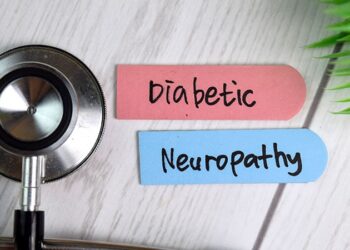A new weight-loss compound targeting energy expenditure rather than appetite suppression showed early efficacy in a first-in-human study.
The compound, SANA (MVD1; Eolo Pharma), activates creatine-dependent thermogenesis, a novel approach to obesity and metabolic disease compared to appetite suppression, explained Eolo Pharma CEO María Pía Garat. “To our knowledge, SANA is the only small molecule in clinical development that targets this mechanism, and we expect growing interest in this pathway as our data progresses.”
SANA has completed phase 1a/b trials, demonstrating safety, tolerability, and early efficacy over 15 days of treatment, she told Medscape Medical News. “If upcoming phase 2 trials replicate these results and support a clear benefit-risk profile, we believe SANA could potentially reach the market within the next 4-5 years, subject to regulatory pathways and ongoing trial outcomes.”
The study was published online in Nature Metabolism.
‘Complementary Therapeutic Approach’
SANA, a nitroalkene derivative of salicylate, demonstrated efficacy in preclinical models of diet-induced obesity and significantly reduced liver steatosis and insulin resistance by enhancing mitochondrial respiration and increasing creatine-dependent energy expenditure in adipose tissue.
Unlike glucagon-like peptide 1 (GLP-1) receptor agonists that are associated with muscle wasting and loss of lean mass, SANA was shown in preclinical models to significantly preserve and at times increase lean muscle mass while reducing fat mass. Specifically, EchoMRI analysis in diet-induced obese mice showed that SANA-treated animals had a greater percentage of lean body mass than control animals, despite substantial fat loss.
Based on the accumulated preclinical evidence indicating that the compound might be a suitable first-in-class drug for treatment of obesity and comorbidities, the researchers embarked on a double-blind, randomized, placebo-controlled phase 1a/b study.
The trial included a single ascending dose (200-800 mg) cohort of 17 lean volunteers and a multiple ascending dose (200-400 mg) cohort of 24 individuals with obesity. The primary endpoint was safety and tolerability. Secondary and exploratory endpoints included pharmacokinetics, tolerability, body weight, and metabolic markers.
SANA was shown to be safe and well tolerated at all dose levels, with no serious adverse events reported. In the Phase 1b portion, patients receiving the drug experienced a significant reduction in body weight compared to placebo, along with improvements in fasting glucose and insulin resistance as measured by HOMA-IR. The metabolic improvements were observed after 2 weeks of treatment and occurred without any significant changes in diet or activity levels.
“SANA introduces a novel and potentially complementary therapeutic approach to obesity and metabolic disease — one that doesn’t rely on appetite suppression but instead taps into a previously underutilized biological mechanism, namely, creatine-driven thermogenesis,” Garat said. “It may also offer an alternative for patients who cannot tolerate GLP-1 therapies or who experience undesirable side effects.
Additionally, its oral or subcutaneous dosing flexibility could support patient adherence in real-world settings.”
That said, she added, “As with any first-in-human compound, long-term safety, especially with chronic use, will need to be carefully monitored.”
The study had limitations. Although the human results support the notion that SANA may be effective in humans, the trial was designed to test safety and tolerability. “The efficacy of SANA in humans needs to be further studied in a phase 2 clinical trial, with longer treatment, increased sample number, and extended measurements to validate its efficacy and mechanism of action,” the authors wrote. “As such, the efficacy results presented here, although promising, are still preliminary and subject to further validation.”
The authors had various forms of funding, as detailed in the paper. Multiple authors declared holding shares in Eolo USA and/or serving as advisors to the company.
Marilynn Larkin, MA, is an award-winning medical writer and editor whose work has appeared in numerous publications, including Medscape Medical News and its sister publication MDedge, The Lancet (where she was a contributing editor), and Reuters Health.
Source link : https://www.medscape.com/viewarticle/promising-weight-loss-compound-targets-energy-expenditure-2025a1000h60?src=rss
Author :
Publish date : 2025-06-26 12:53:00
Copyright for syndicated content belongs to the linked Source.














